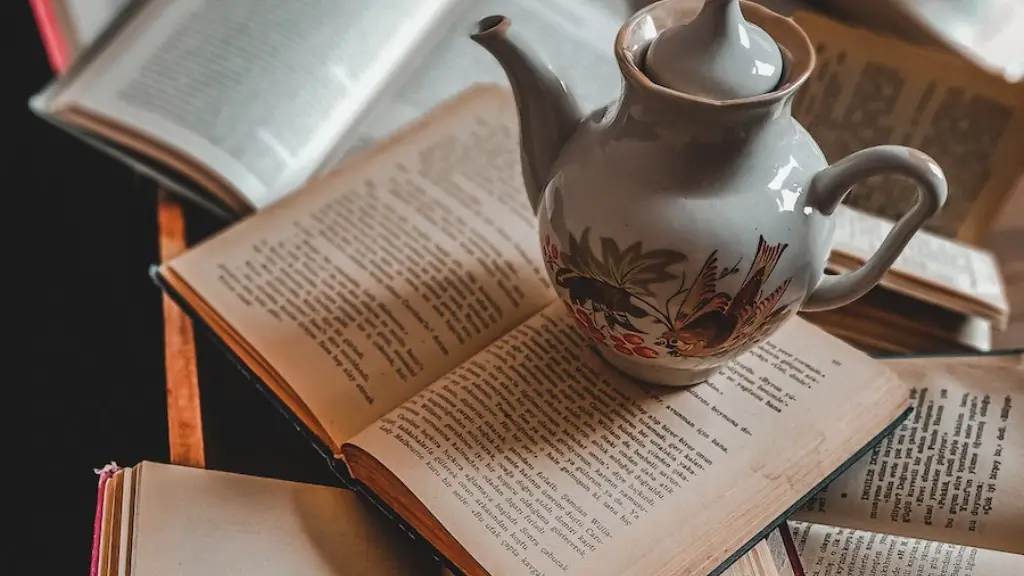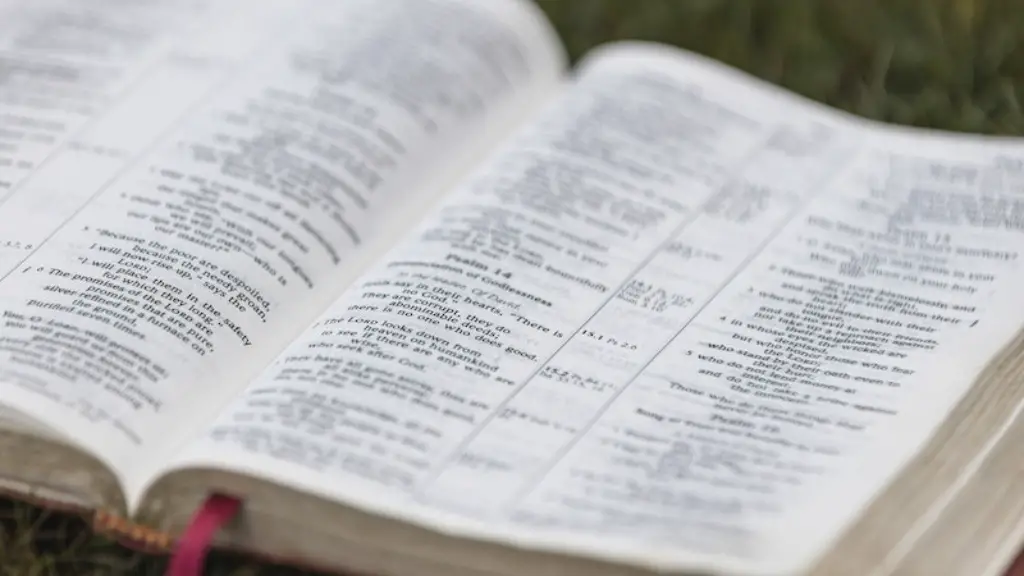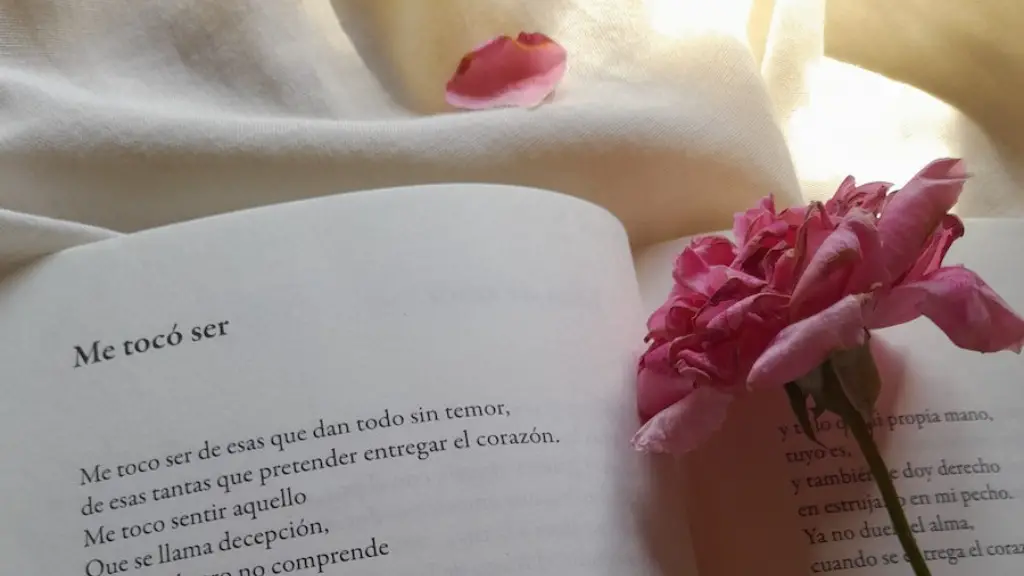What Is Metrical Feet In Poetry?
Metrical feet are a key element in traditional poetry and are used to establish the poem’s rhythm. Many forms use this technique, where the poet arranges words side by side in a particular pattern of stressed and unstressed syllables. This allows for the poem to create a sense of continuity, and it helps guide the reader’s attention to certain aspects of the poem.
In English poetry, a foot typically contains two syllables – one stressed and one unstressed. However, there are various combinations that can be used to form feet in a poem. For example, an iambic foot consists of two syllables – an unstressed syllable followed by a stressed syllable. Other feet include the trochee, which contains one stressed syllable followed by an unstressed syllable, the anapest, which contains two unstressed syllables followed by a stressed syllable, and the dactyll, which contains one stressed syllable followed by two unstressed syllables.
The type of metrical foot used in a poem can affect the overall mood. An iambic foot, for example, provides a steady rhythm, which can create a feeling of calm and ease. Conversely, a trochaic foot may produce a faster and more energetic rhythm, which can evoke a sense of excitement and energy.
In some cases, a poem may contain multiple metrical feet. A poem written in iambic pentameter, for example, contains five iambic feet per line. Meanwhile, a poem written in a Scazon pattern contains a mixture of iambs, trochees and anapests.
Metrical poetry can also be combined with rhyme and alliteration to further emphasize its rhythm. By carefully selecting words that contain various sounds and syllables, a poet can create a chain of bound sounds that ties together the entire poem.
The History of Metrical Feet in Poetry
The use of metrical feet in poetry dates back centuries, with ancient cultures such as the Greeks and Romans having used this technique in their works. In fact, metrical feet have been used throughout literature and poetry to convey specific emotions and ideas.
During the Middle Ages, many European poets began to experiment with different meter patterns in their works. Famous works such as ‘Sir Gawain and the Green Knight’ used alliteration and rhymes to create a steady rhythm, while French poets such as Francois Ronsard and Pierre de Ronsard experimented with various metrics to evoke emotions.
The rise of the English sonnet during the 17th century further cemented the importance of metrical feet in poetry. English sonnets are composed in iambic pentameter, which consists of five iambic feet per line. By using this meter, poets were able to express profound thoughts in a short amount of space.
Modern Uses of Metrical Feet in Poetry
Today, the use of metrical feet in poetry is still going strong. Poets from all walks of life continue to experiment with different meters and patterns to produce emotionally meaningful works. Some forms of free verse, for example, make use of unpredictable meter patterns and syllable counts to create a sense of freedom and spontaneity.
In addition, many popular forms of music are rooted in metrical feet. Rap and hip-hop music, for example, often incorporates a steady iambic beat, while traditional ballads feature a mix of metrical feet and syllables.
The Benefits of Metrical Feet
Using metrical feet in poetry can be beneficial in a variety of ways. Firstly, it helps to draw the reader’s attention to the meaning behind the words. By arranging words in a rhythmic pattern, a poet can ensure that the reader does not lose focus.
Secondly, it helps to give the poem structure. By organizing the poem into a certain number of feet, a poet can easily determine the overall length and form of the work. This in turn helps them to craft the poem in a way that is logical and consistent.
Finally, metrical feet can be used as a tool to evoke emotion. By carefully selecting different syllables and meters, a poet can craft a piece of work that not only conveys deep thoughts but also invokes powerful feelings in the reader.
The Drawbacks of Metrical Feet
Though metrical feet can be a powerful tool for expressing emotion, it is important for poets to be aware of its potential drawbacks. Firstly, some forms of metrical feet can be difficult to grasp. For example, iambic pentameter is often seen as a complex form of poetry, as its structure can be quite intricate.
In addition, some poems may become overly reliant on meter. As a result, the poem may lack depth and meaning, as the focus is placed more on the meter than the words themselves. This can lead to poems that are ponderous and tedious.
Metrical Feet in the Digital Age
In the digital age, the use of metrical feet in poetry continues to grow. Many online publications and publications are dedicated to metrical poetry, while there are a wide variety of apps and websites that allow users to craft works in different metrical feet.
However, it is important to note that the use of metrical feet in digital poetry is not always the same as it is in traditional works. In many cases, digital poets are more inclined to experiment with different meter patterns and syllable counts. As a result, these works often contain more unpredictable rhythms and surprises than those found in traditional poetry.
The Impact of Metrical Feet on Poetry
Overall, the use of metrical feet in poetry has been a major source of development and creativity in this field. By carefully arranging words in certain patterns, a poet can convey thoughts, ideas and emotions in a powerful way. In addition, the use of metrical feet can also be seen as a way of conveying the poet’s unique style and voice.
Metrical feet is also an important tool for cultivating English language skills, as it helps to teach readers how to effectively craft and read poetic works. By understanding the different types of metrical feet and their uses, readers can learn to appreciate the rhythm and tone of a poem on a deeper level.
The Challenges Faced By Metrical Poets
Though the use of metrical feet in poetry is beneficial in many ways, it can also pose challenges for poets. Firstly, it can be difficult to determine whether a poem is written in a certain meter. In addition, some forms of metrical feet may contain intricate syllable counts, which can be challenging for poets to master.
Secondly, the use of metrical feet can sometimes lead to overly predictable or formulaic works. This can be especially true in cases where the poet is overly reliant on meter, as the poem may lack spontaneity and emotion.
Finally, a poet may find that the meter they have chosen does not convey the desired emotion. For example, a trochaic foot may be inappropriate for a poem that is supposed to evoke a sense of calm and ease, as this meter is usually associated with a faster and more energetic rhythm.
Conclusion
Metrical feet are a major part of poetry and have been used in the works of poets from all walks of life. By carefully selecting words and syllables, a poet can create a poem that has both depth and rhythm. Though it can be a challenge for some, mastering the use of metrical feet can help poets craft works of poetry that are both meaningful and expressive.


